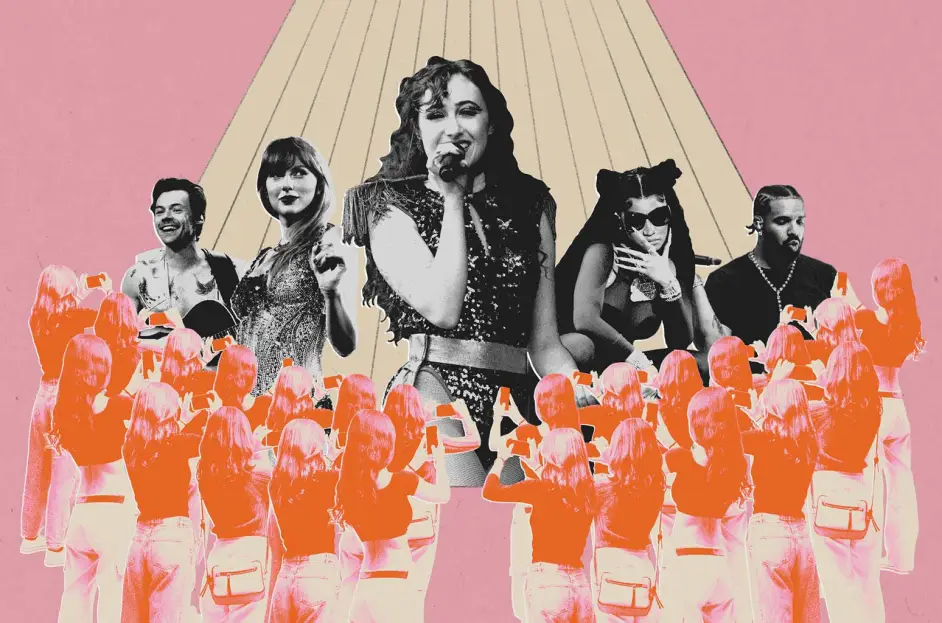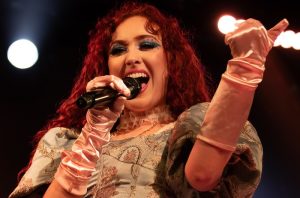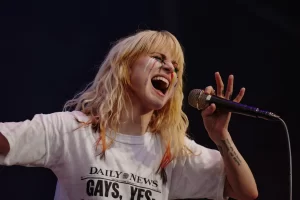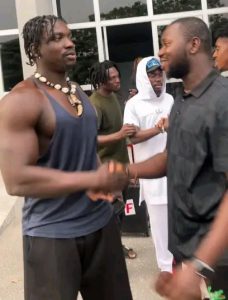‘A tipping point’: Why Chappell Roan and other stars are taking on toxic fans
4 min read
In just eight months, Chappell Roan has transformed from a relative unknown into one of the most prominent new pop stars in the world. However, as the Missouri-born 26-year-old wraps up a sold-out tour in the UK, she faces a troubling reality: the invasive nature of fame and superfandom is beginning to overshadow her success.
In August, Roan made headlines after posting two TikToks that garnered over 30 million views, in which she addressed the “creepy behavior” she has encountered and urged fans to respect her personal boundaries. Her candid remarks highlighted an alarming incident where a fan forcibly grabbed and kissed her at a bar, as well as another situation where police were called to manage an autograph seeker who wouldn’t take no for an answer. More recently, Roan revealed to The Face magazine that she may consider leaving the music industry if the harassment continues. “Fame has the vibe of an abusive ex-husband,” she stated, emphasizing the mental toll of her rapid rise to stardom.
Roan’s reflections have sparked a broader conversation about the changing dynamics between artists and their fans. As she navigates her dual identity as a performer and a private individual, Roan has sought to create boundaries that preserve her well-being. She is not alone in this struggle; many artists are starting to vocalize their experiences with toxic fan interactions.

Chappell Roan, whose drag persona is distinct from her personal life as Kayleigh Amstutz, emphasizes authenticity as a cornerstone of her appeal. However, the expectation for public figures to be constantly accessible can lead to overwhelming responsibilities. “Everyone wants to see who you really are on social media,” she explained in a previous interview. “But there’s this delusion that they know you and can tell you anything.” At meet-and-greets, many fans confide deeply personal stories about their struggles, seeking connection and solace in her music. While she appreciates the impact of her art, Roan admits, “As Kayleigh, I can’t handle that responsibility.”
Roan’s attempt to set these boundaries has not come without backlash. Critics have labeled her comments as entitlement, arguing that the downsides of fame are simply part of the package. However, many fans express support for Roan’s openness. Lily Waite, a 29-year-old trans woman, described Roan’s willingness to address these issues as groundbreaking. “The majority of fans are wonderful and earnest and respectful,” Waite remarked, noting that Roan’s call for more considerate interactions targets those who disrespect her boundaries.
The queer community, in particular, has a nuanced understanding of mental health and personal struggles, as noted by Rebecca Clark, 35, who identifies as queer. She believes Roan’s experiences in the drag scene have shaped her perspective, making her more vulnerable on the global stage. Clark commended Roan for recognizing the superficiality that often accompanies fame, advocating for a more authentic relationship between stars and their supporters.

Notably, other artists have joined Roan in this dialogue. Paramore’s Hayley Williams expressed solidarity, stating that such experiences are not uncommon among women in the music industry. “Social media has made this worse,” she wrote, praising Roan for addressing these issues candidly. Mitski, too, welcomed Roan to a “club” where public figures face harassment and intrusive behavior from fans.
For Sarah Ditum, author of Toxic, the year has marked a significant shift in how celebrities articulate their struggles with fan interactions. Ditum points out that this generation of artists is more equipped to discuss mental health and personal boundaries, a cultural evolution driven in part by the legacies of stars like Britney Spears. Spears’ experiences highlight the exploitation inherent in fame, particularly in an era defined by relentless media scrutiny.
As a pop star in today’s social media landscape, Roan’s challenges are compounded by the phenomenon of parasocial relationships—where fans develop an illusion of intimacy with celebrities they have never met. Ditum notes, “While social media allows stars to connect with their audience directly, it also gives tremendous power to that audience.”
In a time when the dynamics of fame are rapidly evolving, Chappell Roan stands at the forefront of this discussion. Her courage to speak out against toxic fandom reflects a growing awareness among artists about the importance of mental health and personal boundaries. As the conversation around celebrity culture continues to shift, it is essential for both fans and stars to navigate this new terrain with empathy and respect.







